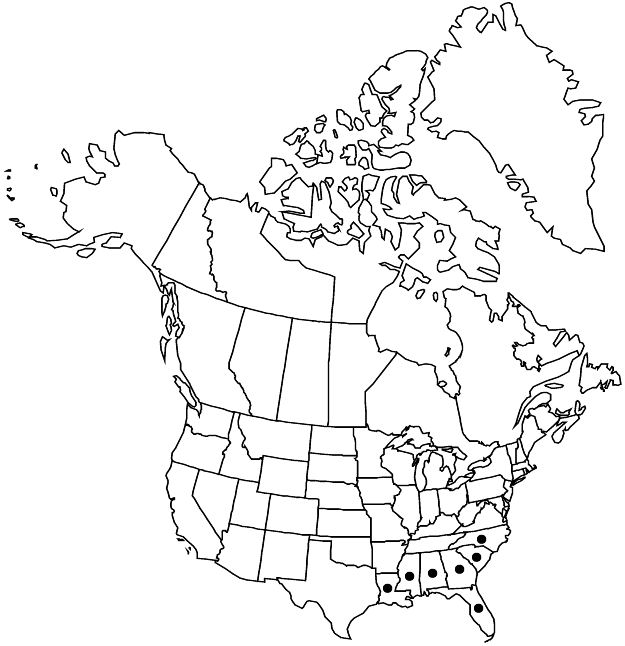Crataegus florens
Biltmore Bot. Stud. 1: 94. 1902.
Shrubs or trees, 30–60 dm, branches ± weeping. Stems: twigs: new growth sparsely to densely spreading-pubescent, 1-year old tawny to reddish brown, 2-years old dark gray; thorns on twigs usually numerous, straight to slightly decurved, 2-years old shiny blackish gray, ± fine to ± stout, 2–4.5 cm. Leaves: petiole length 25–33% blade, ± pilose young, glandular; blade dark green mature adaxially, narrowly obovate to obovate, 2–4.5 cm, thin, slightly coriaceous, base abruptly tapered, lobes 0, or 1 or 2 per side distally, obscure, lobe apex obtuse to subacute, margins ± coarsely glandular-serrate, veins (1 or)2–4 per side, apex often ± cuspidate, adaxially shiny mature, surfaces glabrous, veins sparsely pubescent; on extension shoots broadly elliptic to ± orbiculate, larger, often slightly incised, strongly serrate. Inflorescences 3–6-flowered; branches sparsely to moderately pilose; bracteoles caducous, linear, margins glandular. Flowers 15–18(–25) mm diam.; hypanthium sparsely pubescent; sepals narrowly triangular, 4–5 mm, margins glandular-serrate, adaxially sparsely hirsute; anthers pale yellow; styles 3(–5). Pomes orange-red to red, suborbicular, 8–15 mm diam., glabrous; sepals spreading, 7 mm; pyrenes 3(–5).
Phenology: Flowering Mar–Apr; fruiting Aug–Sep.
Habitat: Brush on sand plains
Elevation: 0–200 m
Distribution

Ala., Fla., Ga., La., Miss., N.C., S.C.
Discussion
Crataegus florens occurs mainly from central Mississippi to the Carolinas and extreme northern Florida; it is common in central Alabama and is disjunct in West Feliciana Parish, Louisiana. The species may occur in more mesic habitats than other members of ser. Lacrimatae.
The type form of Crataegus florens has the smallest, least strongly serrate leaves, veins 2 or 3 per side, and largest flowers, but the circumscription is here expanded to include forms of smaller flower dimensions and with larger, more strongly serrate leaves, including those with 3 or 4 veins per side. As such, C. florens is a fairly common and striking plant with its glossy, deep green leaves, thus superficially resembling members of ser. Crus-galli except for the strongly flexuous twigs. Except for its type form, which is uncommon, it flowers before most other sympatric members of ser. Lacrimatae. Differences from C. attrita, to which it is most similar, and C. teres are given in the key and discussed under those species.
Selected References
None.